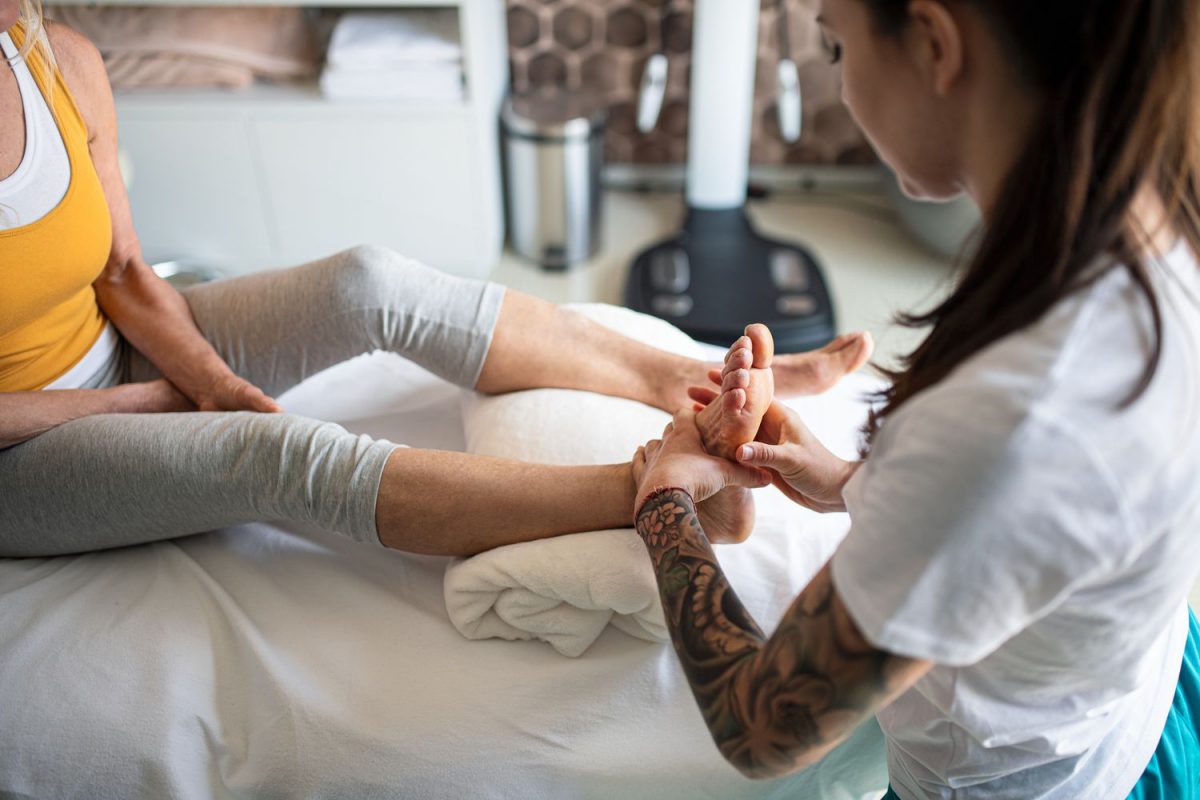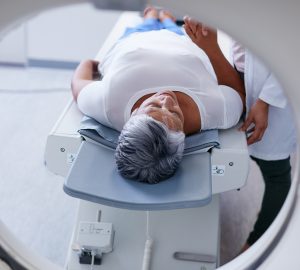Bunion surgery or bunionectomy can help relieve the pain and discomfort caused by a bunion. Most surgeries are outpatient procedures that seek to reposition the big toe to restore function and alleviate pain. Not all cases of bunions require surgical correction. Wearing wider shoes and using protective pads can help relieve the pressure for mild and moderate bunions. However, severe cases may require bunion surgery to realign the bones, ligaments, tendons, and nerves of the big toe back to their ideal positions.
Here’s an overview of bunion surgery, including what it involves, the different types, candidacy, recovery, and more:
What Is a Bunion and What Causes It?
A bunion, medically known as hallux valgus, is a bony structure/bump that forms on the side of the big toe joint. The bump occurs when some of the bones in the front part of your big toe move out of place, causing the big toe to pull toward the smaller toes. Bunions can result from many causes, including wearing tight, narrow shoes, arthritis, foot deformity, and more. Symptoms include a bulging bump on the outer base of your big toe, soreness, swelling, redness around the big toe, ongoing pain, limited movement, and corns or calluses. Bunions can be mild, moderate, or severe. If the metatarsophalangeal joint is damaged beyond repair, doctors see it as an arthritic bunion requiring fusion.
What Types of Bunion Surgery Exist?
Bunion surgery is done to correct the deformity and relieve the pain/discomfort caused by a bunion. Licensed orthopedic surgeons perform the surgery as an outpatient procedure. However, each case is different, and surgeons can recommend unique procedures, including exostectomy, osteotomy, and arthrodesis. Osteotomy is the most common procedure and involves making small incisions in the bones, then using screws or pins to reposition the big toe joint. Exostectomy is a rare surgery involving shaving off the bunion and then using osteotomy to realign the big toe. The procedure is only used for minor bunions. Arthrodesis joint fusion involves removing parts of the toe with the arthritis and using screws to hold the bones while they heal. The procedure is done for the most severe bunions.
What Does Bunion Surgery Involve?
Bunion surgeries vary depending on the severity of the condition and the type of procedure chosen. Most surgeries involve making a small incision along the affected big toe joint. Your surgeon will then reposition the big toe and realign the tendons, ligaments, and nerves around the joint. The surgeon will use local anesthesia to keep you comfortable during the procedure and metal plates, small screws, and wires to set your toe in place. If necessary, your surgeon will remove parts of the affected bone. After realigning the big toe and tendons, the surgeon will close the incision using stitches before applying a sterile bandage. Bunion surgery takes 45 minutes to 3 hours, depending on the severity.
Who’s the Right Candidate for Bunion Surgery?
Bunion surgery is designed for anyone with a painful bunion. If your bunion disrupts your daily activities or causes functional problems, surgery can help you restore function and relieve the pain. Doctors often discourage surgical procedures for bunions that aren’t painful. You can wear comfortable shoes and use protective pads to prevent bunions from worsening. This can slow down the progression and eliminate the need for surgery. However, severe cases may only be resolved by an operation. Consider surgery if the following occurs:
- Your bunion causes significant foot pain that limits daily activities like walking or wearing shoes
- Your big toe drifts toward the other toes and becomes stiff
- You have chronic swelling and inflammation in the area around your big toe
- You have toe deformity where the big toe crosses over or under the smaller toes
What’s Post-Surgery Recovery Like?
The recovery process for bunion surgery varies depending on the severity of the condition and the treatment procedure used. You must also follow your surgeon’s instructions and complete follow-up visits until fully healed. After successful bunion surgery, your doctor will discharge you from the hospital with a dressing/bandage holding the toe in the ideal position. Do not disturb or remove the dressing without consulting your doctor. Keep the dressing dry and follow your doctor’s instructions when changing the bandages. Sutures will be removed after two weeks, but you’ll need continued dressing or brace support for six to 12 weeks.
Here are other post bunion surgery recovery tips:
- Keep your toe elevated and avoid putting weight on the healing toe
- Use ice packs as advised to reduce swelling
- Follow your doctor’s recommendations for pain medication
- Get someone to help with regular tasks for the first two weeks after surgery
FAQs About Bunion Surgery
Are there alternatives to bunion surgery?
Yes. Bunion surgery is only recommended for severe cases that cause pain and disrupt your regular activities. If your bunion isn’t severe or arthritic, you can use protective pads and custom orthotics to improve function and reduce over-flattening of the foot. Choosing the right shoe and conservative approaches, such as modifying your routines, can also help.
How long does it take to return to work?
Bunion surgery is outpatient, so you can return home one to two hours after surgery. However, you’ll need seven to 10 days to resume work. Even then, you should modify your program to avoid standing, as this can put more pressure on your toe and prolong your recovery. Consider getting assistance for up to two weeks after the surgery.
How do I prepare for bunion surgery?
Bunion surgery preparation involves a medical evaluation performed by the surgeon. Inform your doctor about all your medications and provide honest information about your daily activities. Avoid smoking for at least a few weeks, and don’t eat anything after midnight on the day of your surgery. Ask your surgeon about the necessary preparation.
Does bunion surgery carry any risks?
Like most procedures, bunion surgery bears some risks and complications. Bunion recurrence, ongoing pain and stiffness, infection, and inflammation are possible risks. Nerve damage and wound healing problems can also occur. You need experienced orthopedic surgeons to perform the procedure and reduce the likelihood of complications. Follow your doctor’s instructions too.









